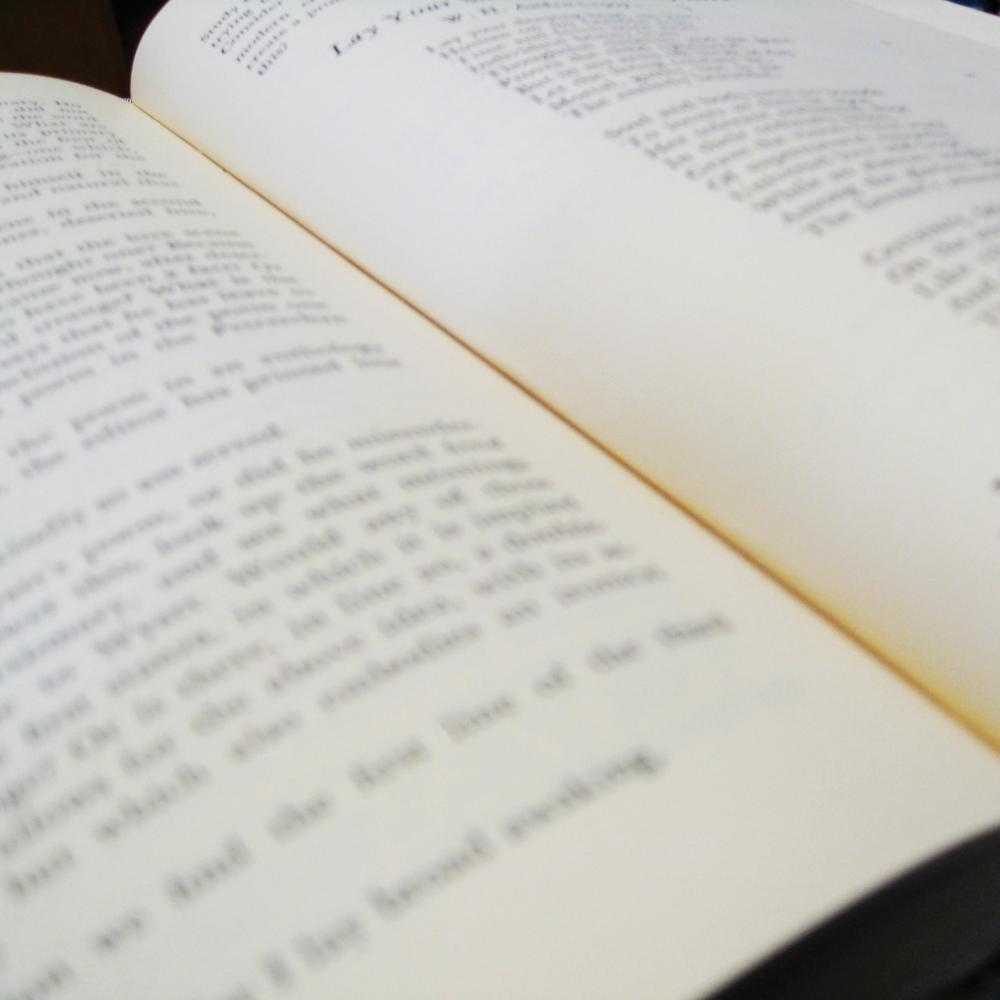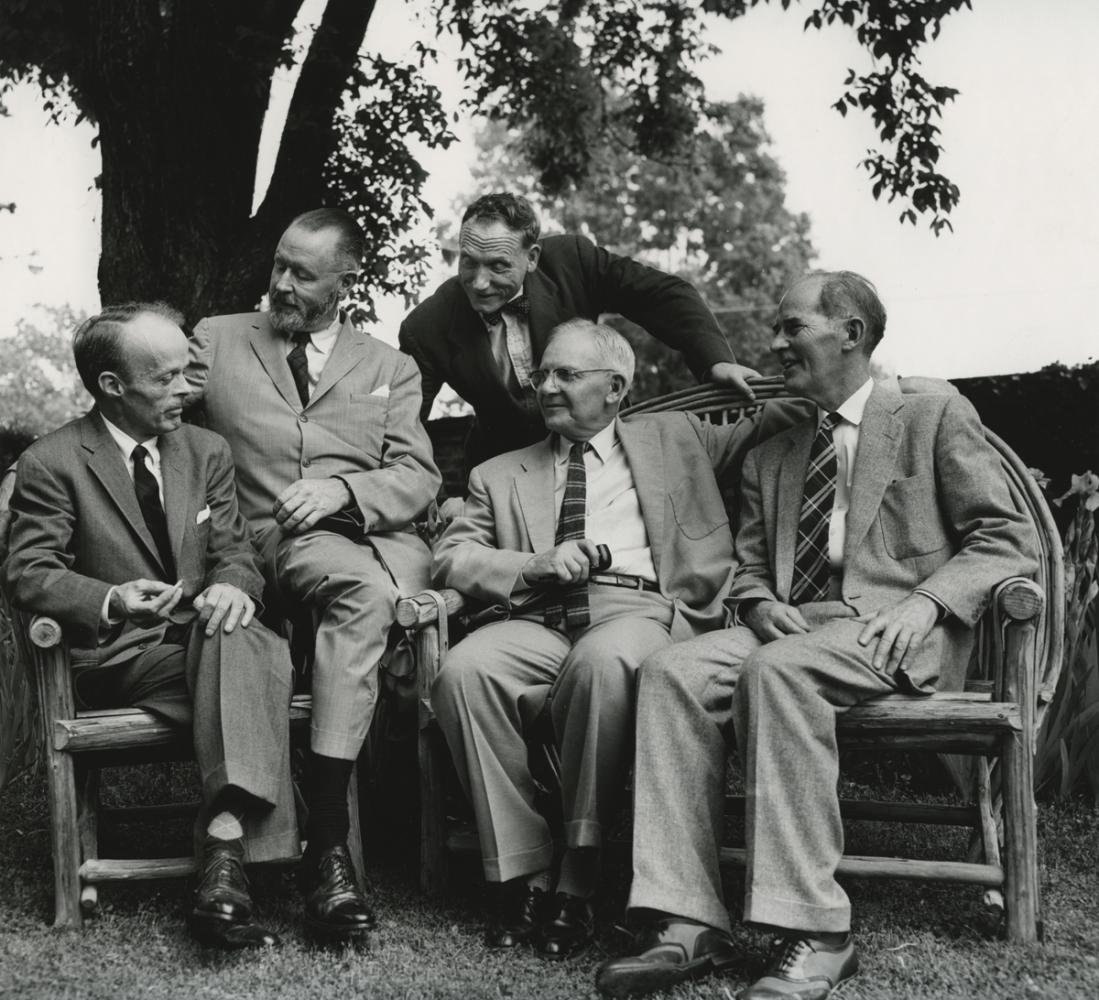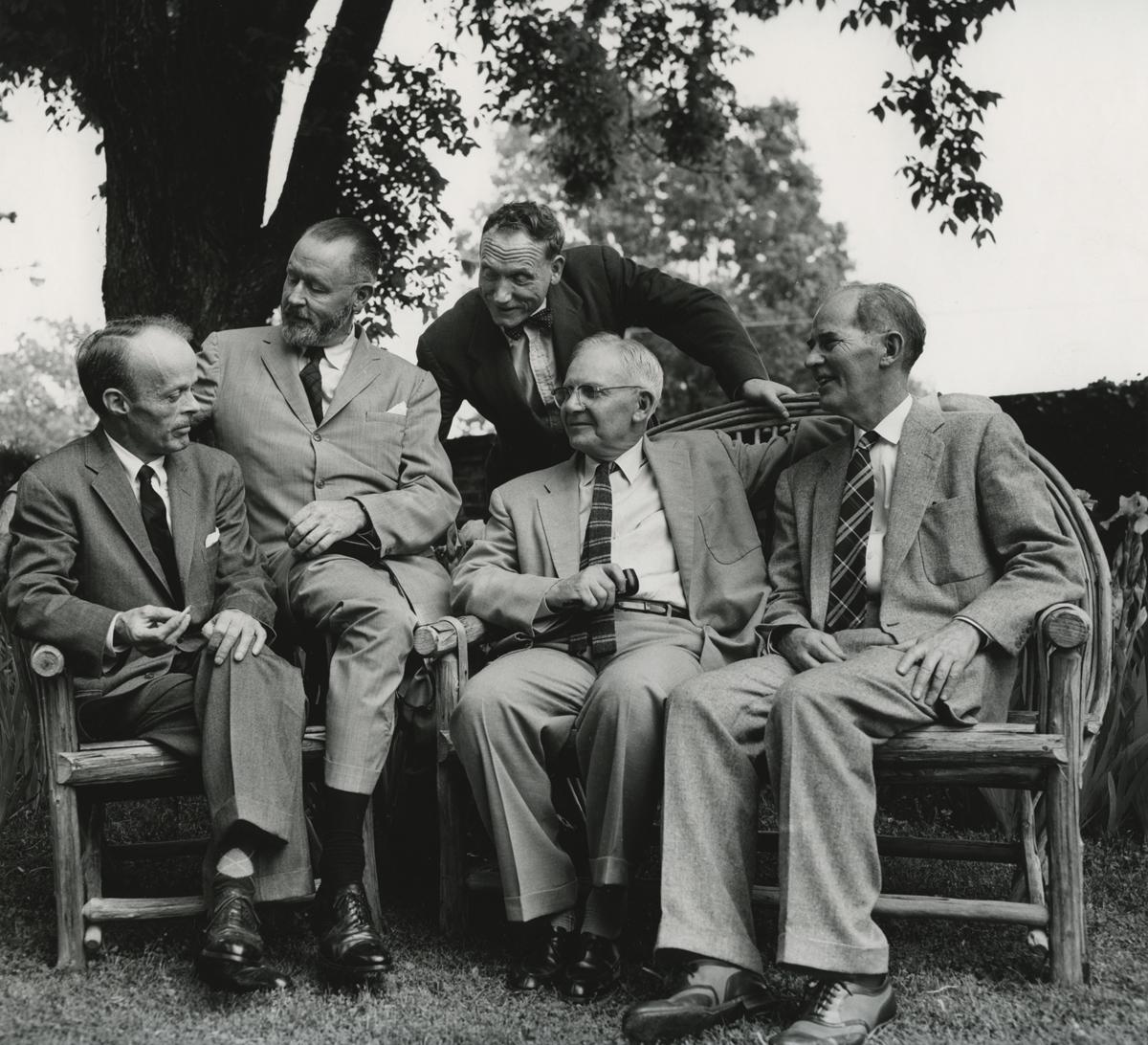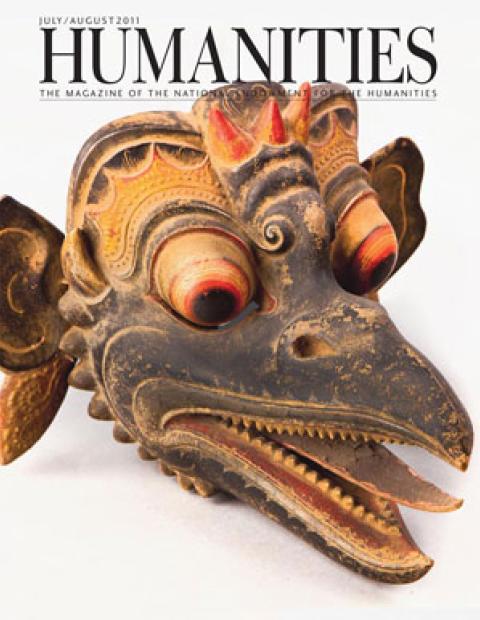In 1938, the most important literature textbook of the twentieth century was published. By the second edition, it had been adopted by more than 250 colleges and universities. The book went through four editions in all, and made millions for its authors, two junior professors at Louisiana State University.
For generations of students, Understanding Poetry was the ceremonial text in that rite of spring, or forced march, called the undergraduate survey course. The radioactive-orange cover of the fourth edition still inspires awe—or dread—among a sizable portion of the living. Among professors, its reputation is even greater: The book is commonly credited with revolutionizing the teaching of literature in America.
Today, when textbooks are written by committees and shaped by consultants at the behest of publishing conglomerates, it seems remarkable that a course book written by two little-known academics could dominate the market for half a century. What’s more remarkable is this: Understanding Poetry is not even the greatest achievement of either of its authors, both of whom became major literary figures: Cleanth Brooks and Robert Penn Warren.
Warren’s reputation as a teacher and critic is almost eclipsed by his poetry, his trophy case of Pulitzers and other prizes, and the popular success of his novel, All the King’s Men. In 2005, the post office issued a commemorative stamp to honor the centenary of his birth.
Brooks remains, for many, the ideal of the English professor. He once served as the cultural attaché to the American embassy in London, arriving just in time to call on an ailing T. S. Eliot; more usually, he was forced to lunch with “time-wasters, the narcissi, and occasionally the clinically insane.” The preeminent scholar of Southern literature, Brooks produced works on Faulkner that remain unsurpassed. His critical books are classics, and his teaching was admired by students such as Robert Lowell, Peter Taylor, and Hugh Kenner.
Understanding Poetry was, in short, merely one title in a roll call of achievements that, between these lifelong friends, constitutes one of the great critical collaborations of the last century. It began auspiciously too.
Brooks and Warren met as undergraduates at Vanderbilt University in 1924—a time when the legendary professor and poet John Crowe Ransom gathered students and teachers on Saturday evenings to read and discuss their own verse informally. The group, which included the poets Allen Tate, Donald Davidson, and Merrill Moore, called themselves “the Fugitives.” They published a literary magazine by that name, chiefly to get their
own work into print. Warren, as a senior, was a member, while Brooks, only a freshman, was not.
These discussions were friendly but also intense and critical, as members offered close readings of proffered verses. It was a heady time to be a humanities student at this tiny college. The first issue of The Fugitive editorialized on the group’s am-bitions: “Official exception having been taken by the sovereign people to the mint julep, a literary phase known rather euphemistically as Southern Literature has expired, like any other stream whose source is stopped up. The demise was not untimely: among other advantages, The Fugitive is enabled to come to birth in Nashville, Tennessee, under a star not entirely unsympathetic.” This was the dawn of the so-called Southern Renaissance.
Both men left Nashville for graduate study elsewhere. Brooks went to Tulane but found it dull; while Warren went to UC–Berkeley only to discover that his new classmates were more interested in Marx and Engels than Pound and Eliot. Both men were awarded Rhodes scholarships. When Brooks arrived at Oxford University in 1929, he found a welcome note from “Red” in his room. This is where their friendly collaborations first took shape, according to Warren:
Our characteristic topic of conversation was the opening world of poetry and poetic criticism and theory. We shared what might honestly be called a passion for poetry. I was already spending night after night trying to write poems, but his [Brooks’s] appetite was leading him into a devoted study of criticism and theory. It was Cleanth to whom I showed my midnight efforts, and from whose criticism, always offered with a graceful tentativeness, I was led more and more into the sense of the relation between theory and practice.
A few years later, as a favor to the graduate school dean (a Rhodes alum himself), the head of the English Department at Louisiana State University brought on Brooks and Warren as cut-rate lecturers. They were surplus; the department was already well-staffed. LSU had largesse to spread around, however, as the state’s governor, Huey Long, had recently set about transforming a third-rate academic backwater into one of the largest universities in the country. Newly tripled in size (its marching band quadrupled as the first priority of the governor), the school had money available for a literary mag-azine as well, and the two young scholars were asked to start the venture. And so the Southern Reviewwas founded in 1935.
While coediting the journal was a carrot, sophomore English was the stick. What the pair discovered in their classrooms at LSU was a situation altogether dire. Though American literature was by now a thriving force—and though literary modernism had decisively seized the salons of Europe and was led by American expatriates such as Eliot, Ezra Pound, Gertrude Stein, and Ernest Hemingway—it was nowhere to be found in American universities.
As late as 1936, the Harvard professor and critic Howard Mumford Jones could say that “in this country education in English literature is education in British literature.” The nation’s schools had not yet accepted the nation’s literature. Shelley, Wordsworth, and Keats presided while Whitman, Dickinson, and Melville remained persona non grata. This state of affairs was yet one more habit that we had learned from our ancestors across the pond.
The tradition of neglecting contemporary and native authors for a pantheon of ancient and foreign books was not accidental. English literature was considered an unacceptable thing to be taught to Englishmen until 1840, when F. D. Maurice was named the first professor in that discipline at King’s College London. The modern reader might ask: Then how were the English learning English before? Or their own literature?
In fact, they were hardly learning English at all. Greek and Latin classics constituted the literature in the schools until World War I. The first book to argue for the study of the English language did not appear until 1582 (Richard Mulcaster’s Elementarie). The first histories of English literature appeared almost two hundred years later, due to the diligence of Thomas Warton (1774) and Samuel Johnson (1779) and at the instigation of booksellers, not professors.
It took another century for F. D. Maurice to get his chair, and for Her Majesty’s School Inspector, Matthew Arnold, to begin including English authors as fit subjects for school exams. Broadly speaking, it wasn’t until the 1850s that literature was taught in Britain with any regularity—a decent interval if one remembers that Chaucer had, by then, been dead for almost five centuries and authored works that proved (as Dante had done for Italian) that the vernacular need not be considered inferior to Latin.
That’s a long time for Chaucer’s countrymen to miss his point, but they did. One might say that English literature became reputable in the schools at exactly the time that the Middle English used by “the father of English poetry” became a fit subject for historical and philological study—the language of Middle English, mind you, not the literary masterpieces that were made from it by Chaucer. This quasi-Germanic and pseudoscientific method was imported wholesale to America and reigned undisturbed until the 1930s.
What Brooks and Warren encountered in the colleges when they began their teaching careers was, in other words, a profession devoted to teaching anything but literature—teaching it, in the memorable jibe of F. R. Leavis, “in terms of Hamlet’s and Lamb’s personalities, Milton’s universe, Johnson’s conversation, Wordsworth’s philosophy, and Othello’s or Shelley’s private life.” What the typical professor of that era taught was a sub-department of history (facts being teachable exam fodder), with an emphasis on biography (the author and his circle), and a penchant for fuzzy, emotional uplift in the responses to reading material.
So, it was not only the curriculum and the reading lists that were outmoded: The discipline of English literature itself seemed hopelessly retrograde. Of course, Brooks and Warren also faced the practical question of how to teach freshmen. Of those early days, Brooks later remarked:
Our students, many of them bright enough and certainly amiable and charming enough, had no notion of how to read a literary text. Many of them approached a Shakespeare sonnet or Keats’s “Ode to a Nightingale” or Pope’s “Rape of the Lock” much as they would approach an ad in a Sears-Roebuck catalogue or an editorial in their local newspaper.
The existing textbooks seemed old-fashioned and unsuitable. So, Warren took it upon himself to write a thirty-page handout on metrics and imagery, which was first used in the spring semester of 1935. A year later, the handout had been expanded to include fiction, drama, and prose—and was printed by LSU as An Approach to Literature. The scholarly old guard on campus, unimpressed by the book, began calling it “The Reproach to Literature.”
The book proved to be so popular that its rights were sold in 1939 to a commercial press, and it remained popular enough to see its fifth edition printed forty years later. Brooks and Warren could now be certain that it was possible to change how literature was taught, and that textbooks would be the catalysts. They wanted to do something bigger, something for their poetry classes. They wanted to call the next book Reading Poems, and they set to work, as Warren later recalled, with a plan:
We sat down and argued out general notions and general plans for the book—only to find as work developed that we were constantly being thrown back to revise original ideas. But very early Cleanth had made a fundamental suggestion. After an introductory section of general discussion, we would get down to individual poems, and start with narrative, including folk ballads. Folk poetry has one great pedagogical advantage. It springs from a nonliterary world and some event that has some special appeal to the imagination of that world.
The seven sections of the textbook were divided by literary genres and devices, and the poets were not clumped together according to geography or birth dates. Each section had its own foreword. Almost forty poems were given “close readings” (line-by-line critical discussions) of several pages’ length, while two hundred more were included with questions and exercises attached. A glossary of poetic terms and techniques was included as well.
The introduction to the book made a compelling case for why poetry is essential, but it was not written to be a manifesto of the “new criticism.” Rather, in the prefatory “Letter to the Teacher,” the authors announced:
This book has been conceived on the assumption that
if poetry is worth teaching at all it is worth teaching
as poetry. The temptation to make a substitute for the poem as the object of study is usually overpowering.
The substitutes are various, but the most common ones are:1. Paraphrase of logical and narrative content;
2. Study of biographical and historical materials;
3. Inspirational and didactic interpretation.Of course, paraphrase may be necessary as a preliminary step in the reading of a poem, and a study of the biographical and historical background may do much to clarify interpretation; but these things should be considered as means and not as ends. And though one may consider a poem as an instance of historical or ethical documentation, the poem in itself, if literature is to be studied as literature, remains finally the object for study.
This was the official call for literature teachers across the country to drop the scholarly pretensions of their profession, and return to literature. Though it seems a modest opening paragraph now, it was at the time a rallying cry. John Crowe Ransom, in a review, said as much: “The analyses are as much of the old poems as of the new poems, and those of the old are as fresh and illuminating as those of the new; or at least, nearly. What can this mean but that criticism as it is now practiced is a new thing?”
The contents were startling too. The authors had included poems by their friends, Mark Van Doren and Allen Tate (twice); their teachers John Crowe Ransom (twice, alongside Dryden and Yeats) and Donald Davidson (in between Collins and Donne); and their favorites, such as T. S. Eliot (next to Andrew Marvell) and Hart Crane. Verses by W. H. Auden settled alongside Shakespeare’s.
Assumptions were meant to be unsettled by these proximities. What if a student found himself preferring a poem by Allen Tate to a classic one? Was Tate a classic then? Or was “classic” merely a tag given by the dead for the dead, and constantly in need of questioning? One imagines students were less rattled by this line of thought than their teachers.
Grand literary reputations were poked at and investigated, and poems that had long been classroom staples were found to be flawed. The authors did not pull punches with great men either. Edgar Allan Poe can be “very vague and confused,” and Percy Bysshe Shelley was scorned for his love-swoons, the authors commenting acidly that “some people die very easily—they are always dying over this or that—always thinking that they are dying.”
On lesser poets, Brooks and Warren could be charmingly brutal. The authors chopped down Joyce Kilmer’s “Trees” (a poem so popular that its publishing rights kept Poetrymagazine solvent for years) in four pages, with gusto: “The fact that it has been popular does not necessarily condemn it as a bad poem. But it is a bad poem.”
Understanding Poetry placed the gentleman’s canon of nineteenth-century American writing, especially, under such harsh light that most of it was dropped from other textbooks at once. William Cullen Bryant, John Greenleaf Whittier, James Russell Lowell, Oliver Wendell Holmes, and Henry Wadsworth Longfellow: The Genteel Tradition evaporated overnight like a Cambridge fog.
After quoting a poem by James Russell Lowell on the death of one of his children, the authors wrote: “We know that this poem was written by Lowell as an expression of personal grief. But this does not mean that the poem is necessarily a good one.” That was mild.
Over three pages, Sidney Lanier was hammered as a sentimental poet with incoherent imagery: “The poet should have solved this difficulty of implication for the reader or should have abandoned the image. Instead, he ignored the matter, which seems to argue that he himself really was not paying much attention to the full implication of what he was doing.” So much for Lanier’s tearful tribute to his dear wife.
The Bostonian bric-a-brac was replaced by American originals: Walt Whitman, Emily Dickinson, and the modernists. A poem by Amy Lowell was included, and approved of, after one by Wordsworth. Ezra Pound and H. D. were yoked together, with a nod to the Imagist credo. Robert Frost got the lion’s share of attention, with eleven poems printed in their entirety. He must have crowed when he saw “After Apple-Picking” sandwiched between Milton’s “Il Penseroso” and Lord Byron’s “Ocean.”
Brooks and Warren broke with another orthodoxy by including so many poets of the American South. A century after Ralph Waldo Emerson had warned his countrymen that they had “listened too long to the courtly muses of Europe” and that it was time for an exceptional literature to come forth from the free minds of an exceptional democracy, the American university at last had a textbook that treated its own poets seriously.
In his old age, Warren remembered their efforts very modestly: “In 1938 our book appeared to a small stir of praise and blame. As the years passed we certainly never felt that this was the book we had hoped to make.”
English professors had a very different reaction. “For us the real revolution in critical theory,” wrote Arthur Mizener, “was heralded by the publication . . . of Understanding Poetry.” Harold B. Sween added, “Among the rank and file of university faculty in the English-speaking world, few works of this century have gained the influence” of this book.
If we name those books that every American should read, the list is rather long, but if we name those books that every American has read, the list is very short. In our high schools: Adventures of Huckleberry Finn, The Great Gatsby, and The Catcher in the Rye. In our colleges, Beloved. By this real-life standard, the importance of Understanding Poetry becomes clear: Its contents are the closest approximation to a canon of poetry that we possess. Herein are the poems many educated Americans have actually read.
Brooks and Warren’s taste has stood the test of time, but then both were readers of real genius. One fellow LSU professor even gushed to a student that “Brooks sees more in one line of poetry than anyone else does in the entire poem. He’s probably the world’s most profound reader of poetry.”
In our own day, when the humanities are frequently taken to be in a state of terrible decline, we have need of such readers. We have need of teachers like Brooks and Warren who would always pause to explain why freshmen should be forced to climb the summits of literature together. If you think that textbooks are invariably dull affairs, you owe it to yourself to find this book.
Nota bene: An editorial change has been made to this article since its publication in the bound and printed form.




